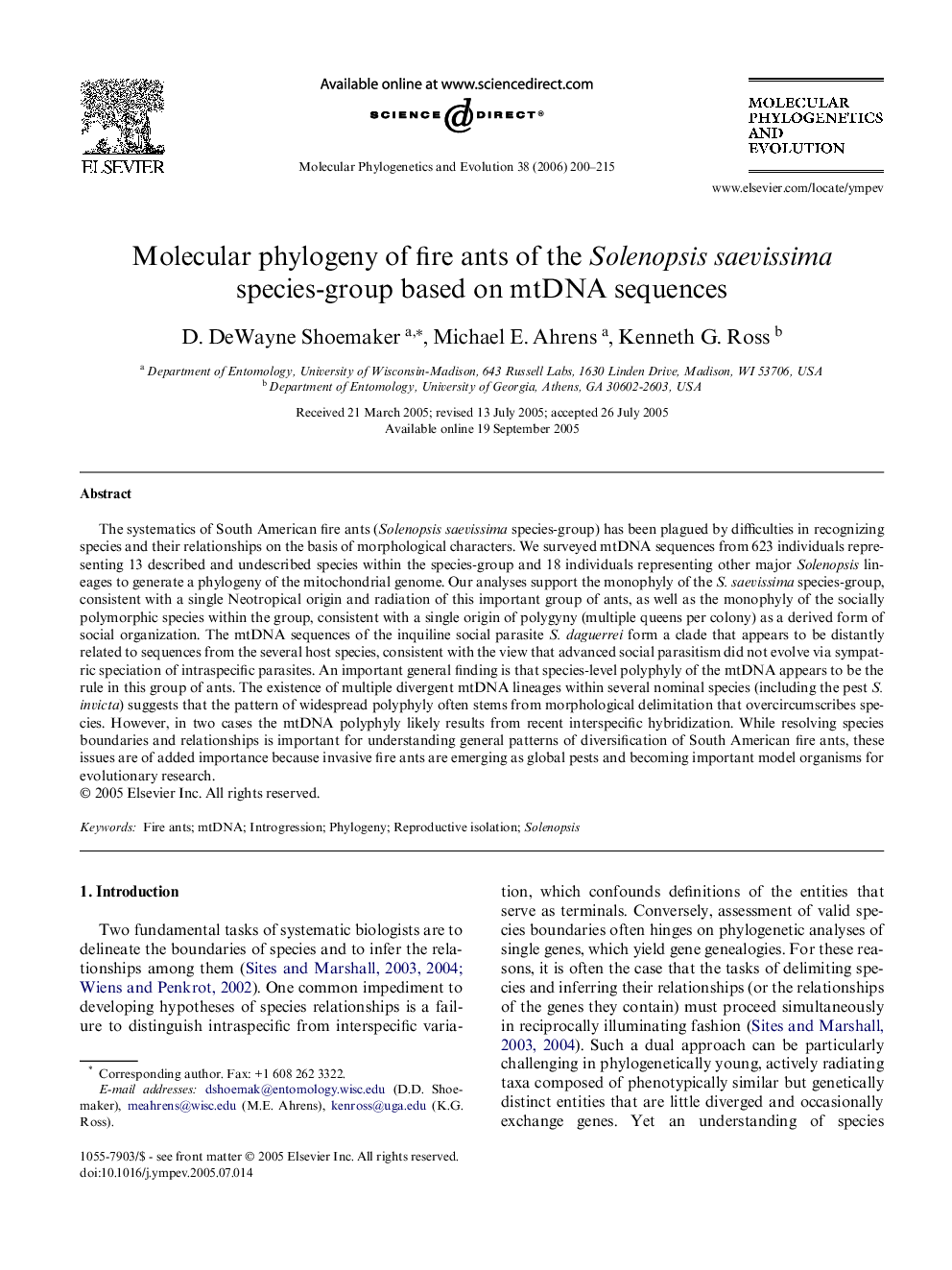| کد مقاله | کد نشریه | سال انتشار | مقاله انگلیسی | نسخه تمام متن |
|---|---|---|---|---|
| 2836152 | 1164367 | 2006 | 16 صفحه PDF | دانلود رایگان |

The systematics of South American fire ants (Solenopsis saevissima species-group) has been plagued by difficulties in recognizing species and their relationships on the basis of morphological characters. We surveyed mtDNA sequences from 623 individuals representing 13 described and undescribed species within the species-group and 18 individuals representing other major Solenopsis lineages to generate a phylogeny of the mitochondrial genome. Our analyses support the monophyly of the S. saevissima species-group, consistent with a single Neotropical origin and radiation of this important group of ants, as well as the monophyly of the socially polymorphic species within the group, consistent with a single origin of polygyny (multiple queens per colony) as a derived form of social organization. The mtDNA sequences of the inquiline social parasite S. daguerrei form a clade that appears to be distantly related to sequences from the several host species, consistent with the view that advanced social parasitism did not evolve via sympatric speciation of intraspecific parasites. An important general finding is that species-level polyphyly of the mtDNA appears to be the rule in this group of ants. The existence of multiple divergent mtDNA lineages within several nominal species (including the pest S. invicta) suggests that the pattern of widespread polyphyly often stems from morphological delimitation that overcircumscribes species. However, in two cases the mtDNA polyphyly likely results from recent interspecific hybridization. While resolving species boundaries and relationships is important for understanding general patterns of diversification of South American fire ants, these issues are of added importance because invasive fire ants are emerging as global pests and becoming important model organisms for evolutionary research.
Journal: Molecular Phylogenetics and Evolution - Volume 38, Issue 1, January 2006, Pages 200–215